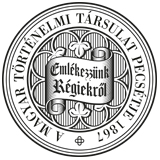Századok – 2009
TANULMÁNYOK - Horváth Zita: Örökös és szabadmenetelű jobbágyok a 18. századi Magyarországon V/1063
peasant plots. The historiography of the 1970s and 1980s offered a more balanced view, but the simplyfying statements about the perpetual serfdom were rarely questioned, and they thus live on as part of the general view of a peasantry ruthlessly oppressed by their lords. This general view is also reflected by the history schoolbooks. The main reason of this survival is that since the fall of the communist regime relatively few historians have dealt with the problems of the peasantry, and basic facts are still unknown. The situation of the peasantiy in the 18th century and its relationship to their lords can mainly be reconstructed on the basis of the sources produced in the wake of the peasant law issued by Maria Theresia (1740-1780). The study analyses, on the basis of the so-called nine-point questionarries furnished by nine counties, the situation of the peasantiy, with a special regard to their legal status (perpetual serfs or free tenants), the modes of their taxpaying (seigneurial register, custom or contract), and the nature of their dues. On the basis of the evidence offered by the nine counties it is clear that the seigneurial dues of the peasantry were various, and cannot be fit into the traditional patterns. This is a further proof of the absence of basic research focussing on the individual counties, manors or regions, without which a balanced view of the peasantry cannot be drawn. The life of the peasantiy in the nine counties touched upon by the present study offers many similarities but even more divergences as regards both their legal status and the quantities and qualities of their dues. The most useful would be to compare all the counties on the basis of the peasant questionaries, for it has become apparent that, despite the vast literature of peasant history, there are still a lot of problems unsolved and questions unanswered. As for the question of whether there existed a perpetual serfdom in Hungary, the study offers the tentative response that it did not exist in the form attributed to it by previous historiography, although there existed perpetual serfs who, just like the free tenants, were subjected to seigneurial authority, and their legal and economic status varied from region to region and from lord to lord. The ruling of the 18th century did create a uniform framework for the confused and sometimes obscure conditions of the peasantry, yet real change, albeit non always beneficial, only came with the liberation of 1848.
